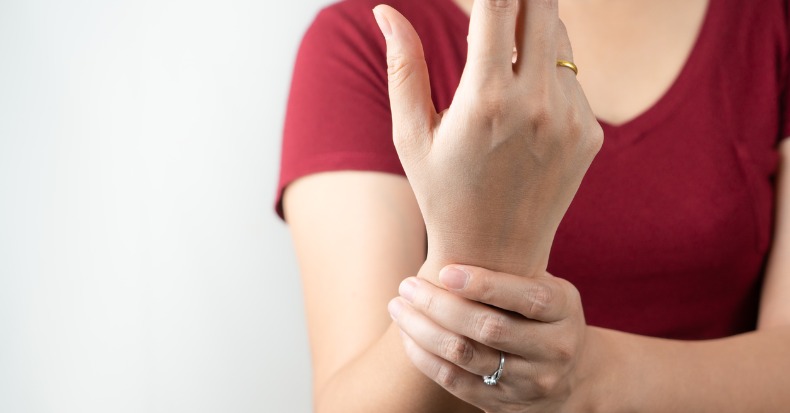Carpal Tunnel Syndrome (CTS) results in numbness, tingling, and sometimes weak grip strength due to pinching of the median nerve as it travels through the carpal tunnel at the wrist. There are many conditions that are similar to CTS, many of which we have discussed in the past. The following is a list of “13 fun facts” aimed at helping to properly identify CTS, knowing what to do about it, and at helping to make an informed decision as to whom to seek help for it.
- CTS is most common in women, people over 50 years of age, and those who work in a repetitive, rapid moving manually demanding occupation (typing/computer work, line assembly work, waiting tables, and more).
- CTS is complicated by the presence of obesity, diabetes, hypothyroid, pregnancy, taking birth control pills, and other conditions that cause inflammation (rheumatoid arthritis and others).
- CTS may develop on the dominant side, the non-dominant side, or both—each case is individual.
- CTS symptoms may FIRST present as morning or nighttime numbness that can wake the sufferer up once or many times during the night.
- CTS sufferers USUALLY wait for weeks, months, or even years before seeking help for it, which is a risk factor for a delayed recovery—GET HELP ASAP!!!
- CTS can often be managed without surgery—especially IF you have it treated sooner rather than later.
- CTS surgery may be necessary if non-surgical care fails. This may be due to the nerve being damaged beyond a certain point (an EMG/NCV or electromyography/nerve conduction velocity test can help determine this along with an accurate history and examination).
- CTS non-surgical care includes: chiropractic manipulation of the wrist, elbow, shoulder, and/or neck—depending on the case. All healthcare providers usually recommend a night wrist splint, anti-inflammatory measures, ergonomic modifications of work stations, and stretching exercises.
- CTS non-surgical success favors chiropractic because of the inclusion of the manual therapies. When only exercise, night splinting, and NSAIDS are used, the success rate drops off dramatically.
- Reduced thyroid function makes CTS worse because of the unique type of swelling associated with hypothyroidism called “myxedema.” Because of the confined space available in the carpal tunnel, a small amount of swelling can result in nerve compression and the classic numbness/tingling symptoms in the middle three fingers on the palm-side of the hand.
- CTS is worse at night because it is impossible to control the position of the wrist while we sleep. As a result, we tend to curl the wrist and hand under our chin, and when the wrist bends forwards or backwards, the pressure inside the carpal tunnel increases significantly due to the change in tunnel size. This is why wearing a wrist splint at night REALLY HELPS as it keeps the wrist from bending, keeping the tunnel as wide as possible, thus lowering the pressure within it.
- CTS patients respond well in some cases to vitamin B6. This is due to the healing effects of B6 (peridoxine) on neuropathy and/or its anti-inflammatory qualities. Other anti-inflammatory nutrients include ginger, turmeric, boswellia, bioflavinoids, white willow bark, quercetin, and others.
- CTS patients do not always improve after surgery. This can be due to the fact that the median nerve is frequently “pinched” in more than one area such as the neck, thoracic outlet (shoulder), pronator tunnel (elbow), as well as at the wrist. When more than one compression is present, this is referred to as “double” or “multiple crush syndrome.”
